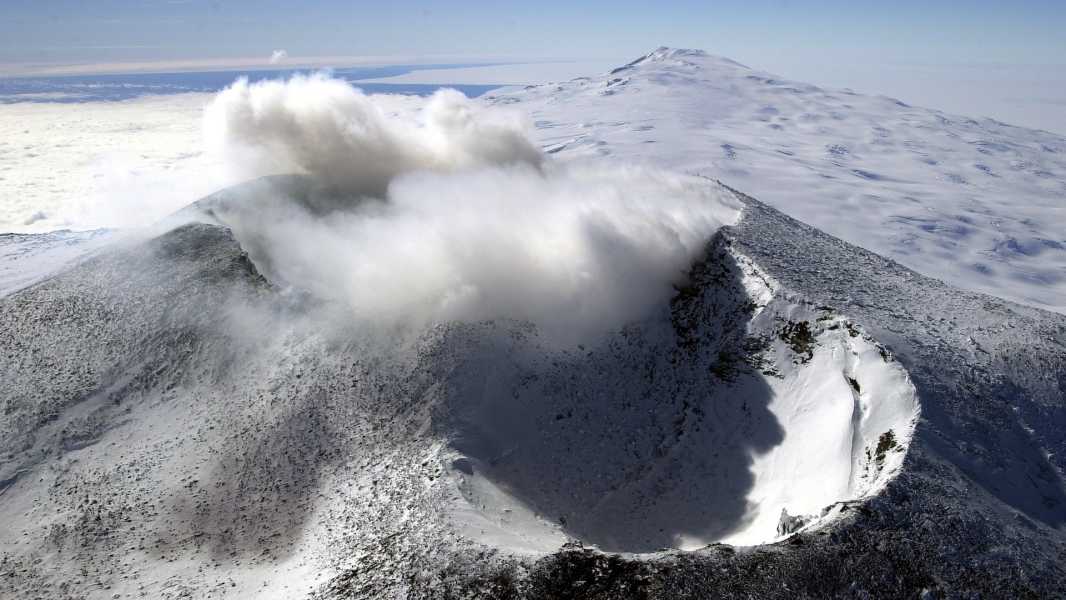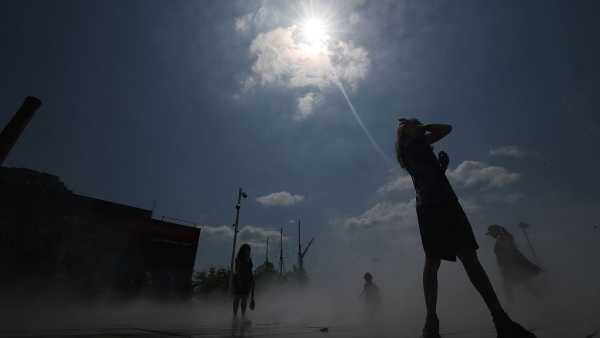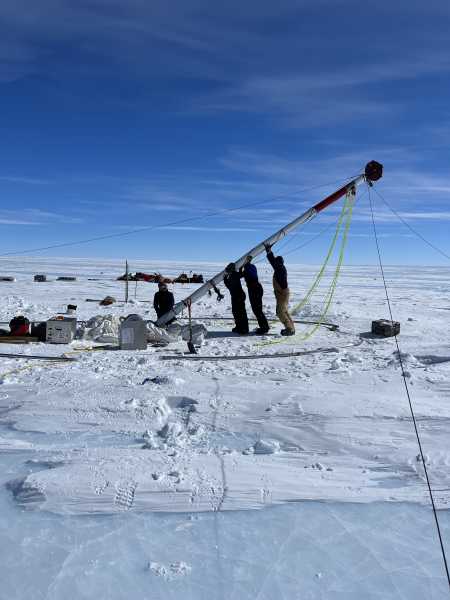
New research suggests that melting ice in Antarctica could lead to more subglacial eruptions involving volcanoes like Mount Erebus, shown here. (Photo courtesy of Josh Landis, U.S. Arctic Program, public domain)
A slow climate feedback loop may be developing beneath Antarctica’s massive ice sheet. The continent, divided into east and west by the Transantarctic Mountains, includes volcanic behemoths such as Mount Erebus and its famous lava lake. However, more than 100 less visible volcanoes are scattered across Antarctica, many of which are concentrated along the west coast. Some of these volcanoes rise above the surface, while others are buried several kilometers beneath the Antarctic ice sheet.
Climate change is causing ice sheets to disappear, which is contributing to rising sea levels. Melting also reduces the stress on the rocks below, causing more localized effects. Research suggests that melting ice sheets are increasing volcanic activity at subglacial volcanoes elsewhere on Earth. Koonin and his colleagues ran 4,000 computer simulations to analyze how ice loss affects Antarctica’s hidden volcanoes, and found that gradual melting could increase both the number and size of subglacial eruptions.
The reason is that this release of ice sheets reduces the pressure on the magma chambers below the surface, causing the compressed magma to expand. This expansion increases the pressure on the walls of the magma chambers and can potentially lead to eruptions.
Some magma chambers also contain significant amounts of volatile gases that would normally dissolve in the magma. As the magma cools and the rock pressure decreases, these gases come out of solution, much like carbon dioxide escaping from a freshly opened soda bottle, increasing the pressure in the magma chamber. This pressure indicates that melting ice may precipitate the onset of a subglacial volcanic eruption.
Subglacial volcanic eruptions may be invisible at the surface, but their effects can affect the ice sheet. Heat from such eruptions can increase the melting of ice at depth and weaken the ice sheet above — which can lead to a feedback loop of lower surface pressure and further volcanic eruptions.
The authors stress that this process is slow and takes hundreds of years. However, this means that the theoretical feedback loop could continue even if the global community takes steps to limit anthropogenic warming. The Antarctic ice sheet was significantly thicker during the last ice age, and it is possible that a similar process of unloading and expanding magma and gas contributed to past eruptions.
This article was originally published on Eos.org. Read the original article.

Madeline ReinselSocial Link NavigationScience Writer
Madeline Reinsel is a science writer with a background in ecology and wildlife conservation, and a recent graduate of science communication at the University of California, Santa Cruz. Before starting graduate school, she worked in the Environment and Sustainability program at the College of William & Mary, primarily working on turtle conservation projects. She is also a Part 107 drone operator and the communications director for the Diamondback Terrapin Task Force.
Sourse: www.livescience.com





